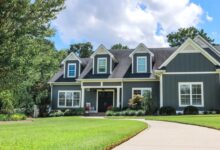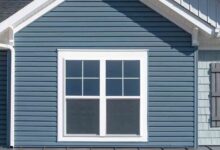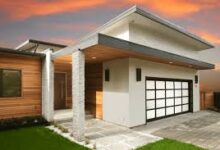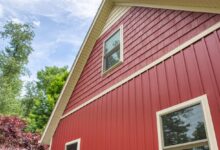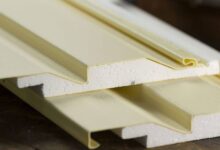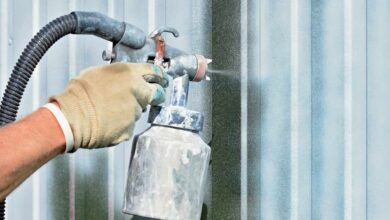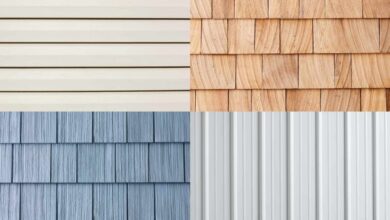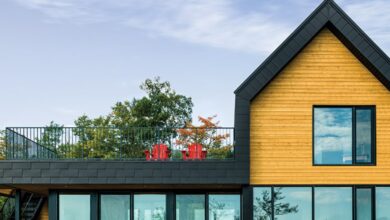Energy-Efficient Siding Options
In recent years, energy efficiency has become a top priority for homeowners, particularly when it comes to home improvements that can directly reduce utility bills. Among the most effective and impactful ways to boost a home’s energy performance is through the selection of the right siding. Energy-efficient siding options not only provide superior insulation but also contribute to the overall sustainability of the home, making them an essential part of modern construction and renovation projects.
In this article, we will explore the best energy-efficient siding options on the market today, breaking down their features, benefits, and real-world applications. We’ll provide detailed information on three of the top siding choices available, compare their pros and cons, and offer advice on how to select the best option based on your unique needs.
Energy-efficient Siding Options: What Are They?
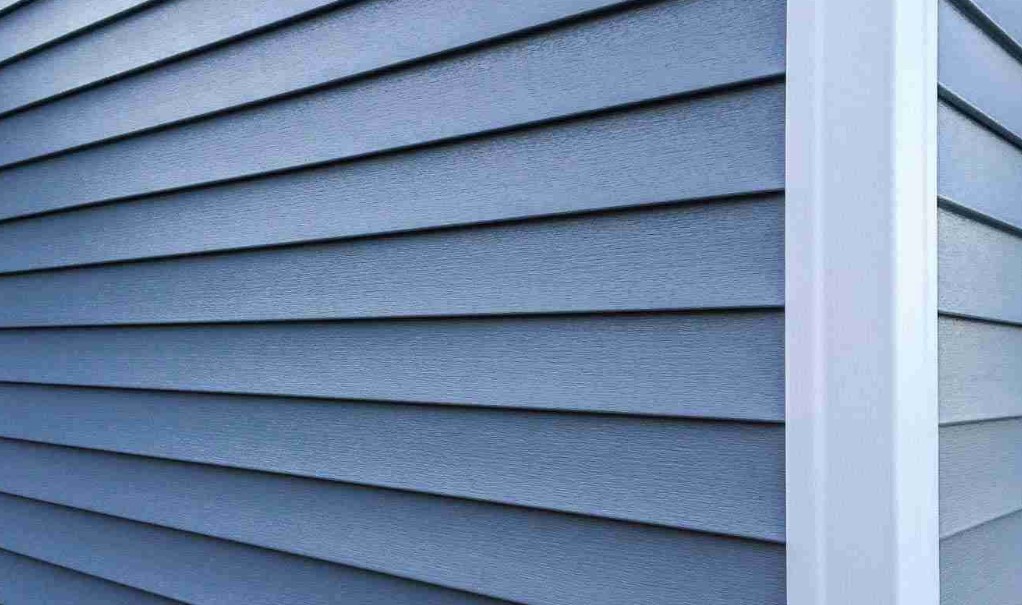
Energy-efficient siding options refer to a category of exterior materials designed to increase the insulation and overall energy performance of a home. These siding products incorporate technologies and materials that help prevent heat loss in the winter and reduce heat gain during the summer, making your home more comfortable and lowering the demands on your heating and cooling systems.
Commonly used energy-efficient siding materials include insulated vinyl siding, fiber cement siding, and composite siding. Each of these materials has unique properties that make them effective at reducing energy consumption, while also offering durability, aesthetic appeal, and low-maintenance benefits. In the following sections, we will dive deeper into these materials and highlight the top products in each category.
Key Features of Energy-Efficient Siding Options
Energy-efficient siding options are designed to optimize a home’s insulation, reduce energy costs, and enhance overall comfort. Below are the key features of these high-performance siding materials:
Improved Insulation Properties
- Foam Backing and Insulation: Many energy-efficient siding materials, such as insulated vinyl, incorporate a foam layer behind the siding. This increases the material’s R-value, providing superior thermal insulation that helps maintain comfortable indoor temperatures throughout the year.
- Enhanced Energy Efficiency: By reducing heat loss in winter and keeping cool air inside during summer, these materials minimize the need for heating and cooling systems, lowering energy bills.
Thermal Resistance
- Heat Transfer Prevention: Siding options like fiber cement and composite are naturally dense, providing strong thermal resistance. This prevents the transfer of heat between the outside environment and your home’s interior.
- Energy Savings: Materials with higher thermal resistance help to regulate your home’s internal temperature more efficiently, reducing the workload on your HVAC system and leading to long-term energy savings.
Weather Resistance
- Protection Against Harsh Elements: Energy-efficient siding often features weather-resistant properties, which prevent moisture infiltration, rotting, and warping. This is especially crucial for areas exposed to extreme weather conditions like heavy rain, snow, or high winds.
- Moisture Management: Insulated vinyl siding, for example, helps protect against water damage by reducing moisture absorption, which is key for maintaining the thermal performance of the siding.
Low Maintenance
- Durability and Longevity: Siding materials such as insulated vinyl, composite, and fiber cement require minimal maintenance compared to traditional wood siding. These materials resist cracking, fading, and pest infestations, which reduces the need for frequent repairs or replacements.
- Cost-Effective in the Long Run: The low maintenance requirements make these siding options cost-effective over time, as homeowners don’t need to repaint or replace damaged siding as often as they would with traditional materials.
Aesthetic Versatility
- Wide Range of Styles and Colors: Energy-efficient siding comes in various textures, colors, and styles, allowing homeowners to choose materials that complement their home’s architectural design. Whether you prefer the traditional look of wood or a more modern, sleek appearance, there are options to suit every preference.
- Long-Lasting Visual Appeal: These siding materials are designed to retain their color and finish over time. Products like insulated vinyl and fiber cement resist fading from sun exposure, helping your home look fresh and attractive for many years.
Sustainability and Eco-Friendliness
- Recyclable Materials: Many energy-efficient siding options, particularly fiber cement and composite, are made from sustainable or recyclable materials, making them an eco-friendly choice.
- Reduced Carbon Footprint: By improving energy efficiency, these siding materials reduce the overall carbon footprint of a home. This makes them an environmentally responsible option for homeowners looking to reduce their impact on the planet.
Insulated Vinyl Siding: A Popular Energy-efficient Siding Option
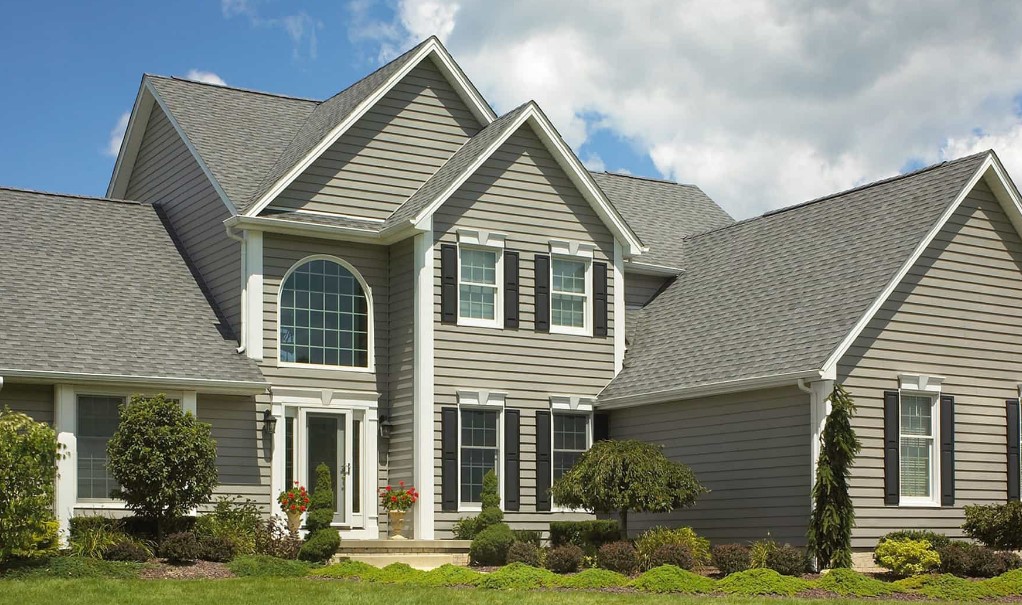
Insulated vinyl siding is one of the most widely used types of energy-efficient siding on the market. It is composed of a layer of foam insulation combined with a durable vinyl exterior. This combination of materials enhances the thermal resistance of the siding, making it significantly more energy-efficient than traditional vinyl siding.
Insulated vinyl siding works by adding an additional layer of insulation behind the vinyl exterior. This foam insulation helps to reduce the transfer of heat between the interior of your home and the outside environment. This means that in the winter, your home will retain more heat, and in the summer, it will be easier to keep the interior cool.
One of the reasons why insulated vinyl siding is so popular is its relatively low installation cost compared to other energy-efficient options. It is also highly durable, requiring minimal maintenance over its lifespan.
Benefits of Insulated Vinyl Siding
- Improved Insulation:
The most significant advantage of insulated vinyl siding is its ability to improve the overall thermal insulation of your home. Insulated vinyl siding can help improve your home’s R-value, which is a measure of the material’s ability to resist heat transfer. The higher the R-value, the better the material is at preventing heat loss. By improving the R-value of your home’s exterior, insulated vinyl siding helps keep your heating and cooling costs down year-round. - Energy Savings:
In terms of energy savings, insulated vinyl siding can reduce energy bills by up to 20%. This is especially beneficial for homes in climates with extreme temperature fluctuations, as the siding helps maintain a consistent indoor temperature. With energy-efficient siding, your HVAC system won’t need to work as hard to regulate the temperature inside your home, leading to a reduction in energy consumption. - Aesthetic Appeal and Variety:
Insulated vinyl siding comes in various styles, textures, and colors, allowing homeowners to choose a look that suits their personal preferences and the architecture of their home. From traditional lap siding to more contemporary styles, there is an insulated vinyl siding option to match virtually any design. Additionally, vinyl siding holds its color well and resists fading from exposure to the sun, ensuring your home’s exterior looks great for years. - Durability and Low Maintenance:
Vinyl siding is known for its durability. It is resistant to warping, cracking, and peeling, even in harsh weather conditions. Unlike wood siding, it does not require regular painting or sealing. This low-maintenance aspect makes it an attractive option for homeowners who want to reduce the amount of upkeep required for their home’s exterior.
Top Product Example:
- CertainTeed® Cedar Impressions Insulated Vinyl Siding
CertainTeed® Cedar Impressions Insulated Vinyl Siding. This product offers the aesthetic beauty of cedar shingles with the added benefit of high-performance insulation. CertainTeed® uses advanced technology to ensure the foam backing is seamlessly integrated, offering a solid layer of protection against energy loss. The product also comes with a lifetime limited warranty, making it an excellent long-term investment for homeowners looking to reduce their energy consumption while maintaining an attractive, low-maintenance exterior.
Pros:
- High R-value for improved insulation
- Variety of color and style options
- Low maintenance and long-lasting
Cons:
- Higher initial cost compared to traditional vinyl siding
- Can be difficult to repair if damaged
Fiber Cement Siding: A Durable, Sustainable Option

Fiber cement siding is a composite material made from a mixture of wood fibers, cement, and sand. It is renowned for its exceptional durability and resistance to fire, rot, and insects. Fiber cement is an ideal choice for homeowners looking for a low-maintenance, long-lasting option that will also improve their home’s energy efficiency.
When properly installed, fiber cement siding offers excellent thermal performance by preventing heat from escaping during the winter and reducing heat gain in the summer. Additionally, fiber cement siding can be enhanced with a foam backer board for even greater insulation, making it a top choice for homes in colder climates.
Benefits of Fiber Cement Siding
- Superior Durability:
Fiber cement is an incredibly strong and durable material. It is resistant to moisture, insects, and fire, which makes it an ideal choice for homes in regions with extreme weather conditions or high humidity. Unlike wood, fiber cement will not warp, crack, or rot over time, which significantly extends its lifespan. - Energy Efficiency:
Fiber cement siding provides excellent insulation. While it does not inherently have foam backing like insulated vinyl, many fiber cement products can be paired with foam insulation for added thermal resistance. The material helps regulate the temperature inside the home, keeping it warmer in the winter and cooler in the summer. - Environmental Sustainability:
Fiber cement is made from natural and abundant materials, making it an eco-friendly option. It is highly recyclable and has a longer lifespan than many other materials, reducing the need for frequent replacements. Additionally, its low maintenance requirements contribute to its sustainability by reducing the need for repainting or other upkeep.
Top Product Example:
- James Hardie® HardiePlank® Lap Siding
James Hardie® HardiePlank® Lap Siding. James Hardie is one of the most well-known brands in the fiber cement siding industry. Their HardiePlank® lap siding offers superior durability and energy performance, making it an ideal choice for homeowners in need of an energy-efficient siding solution. The product is designed to withstand harsh weather, and its aesthetic versatility allows it to complement a wide range of architectural styles.
Pros:
- Fire-resistant and insect-resistant
- Long-lasting, with a lifespan of 50+ years
- Minimal maintenance required
Cons:
- More expensive than vinyl siding
- Installation requires professional help due to its weight
Composite Siding: Combining Beauty with Efficiency

Composite siding is a newer innovation in the world of exterior cladding, combining wood fibers with resins and polymers to create a durable, energy-efficient material. The result is a siding option that offers the natural beauty of wood, with superior insulation and weather resistance.
Composite siding products often have high R-values, meaning they provide excellent insulation and energy savings. They are resistant to rot, insects, and weathering, making them a great long-term investment for homeowners.
Benefits of Composite Siding
- High R-value for Energy Savings:
Composite siding often has superior insulating properties due to its layered structure. This helps reduce the need for additional heating or cooling, making it a highly energy-efficient option. The material’s dense composition allows it to act as a barrier, preventing heat from escaping during the winter and blocking the sun’s rays in the summer. - Aesthetic Appeal:
Composite siding is available in a wide range of finishes, including those that mimic the look of natural wood. It provides an attractive, premium look that enhances the curb appeal of your home. Composite siding’s resistance to weathering and fading ensures that it will maintain its beauty for years without requiring frequent maintenance. - Low Maintenance:
Unlike wood siding, composite siding does not require regular painting or staining. It is resistant to moisture, mold, and insects, which makes it easier to maintain in the long run.
Top Product Example:
- LP® SmartSide® Trim & Siding
LP® SmartSide® Trim & Siding. LP® SmartSide® is an engineered wood product that offers excellent energy efficiency, durability, and aesthetics. It is treated with a protective resin to prevent moisture damage, making it a reliable choice for homes in humid climates. Additionally, it is available in various finishes and textures, allowing homeowners to achieve the look of real wood with enhanced durability and insulation properties.
Pros:
- High R-value for improved energy efficiency
- Attractive wood-like appearance
- Moisture and insect-resistant
Cons:
- Requires occasional maintenance to keep its appearance intact
- Installation can be more expensive compared to traditional siding
How to Choose the Best Energy-efficient Siding Option for Your Home
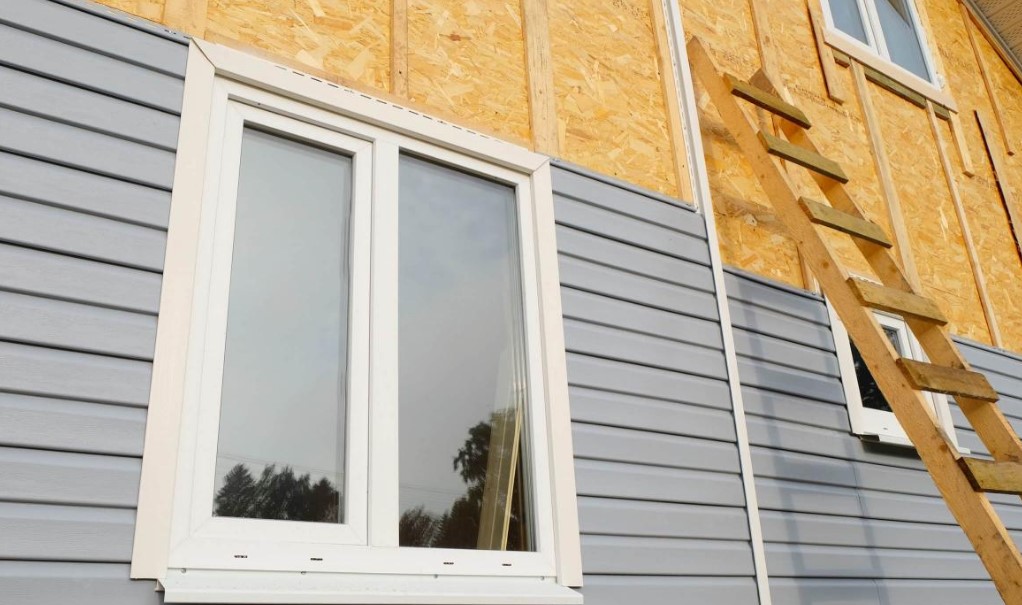
When choosing the best energy-efficient siding for your home, it’s important to consider factors such as your local climate, budget, and the overall aesthetic you’re aiming for. The right siding material can significantly improve your home’s insulation and reduce energy costs, but the best option will depend on your unique needs.
- Climate:
If you live in an area with cold winters, insulated vinyl or fiber cement siding (with foam insulation) will offer the best energy savings. For homes in warmer climates, fiber cement siding provides heat resistance, while composite siding helps maintain a cool indoor environment. - Budget:
While fiber cement and composite siding offer superior performance, they come with a higher initial investment. If you’re on a budget but still want energy efficiency, insulated vinyl siding is a more affordable option without compromising on thermal resistance. - Aesthetic Preferences:
If you’re looking for the natural look of wood, composite or fiber cement siding will provide the appearance you desire, without the upkeep requirements of traditional wood. Insulated vinyl siding, while modern and sleek, offers a more contemporary look.
Where to Buy Energy-efficient Siding Options
You can find energy-efficient siding options at home improvement stores like Home Depot or Lowe’s, or you can purchase them directly from the manufacturer’s website. Many manufacturers also provide assistance in locating certified installers, which can help ensure that your siding is installed properly to maximize its energy efficiency.
How Much Do Energy-efficient Siding Options Cost?
The cost of energy-efficient siding varies based on material, brand, and the size of your home. On average, insulated vinyl siding costs between $3 and $7 per square foot. Fiber cement siding typically ranges from $5 to $10 per square foot, and composite siding generally falls between $6 and $12 per square foot, depending on the style and manufacturer.
FAQs
- What is the most energy-efficient siding?
- Insulated vinyl siding is often considered the most energy-efficient due to its foam insulation layer, which reduces heat loss significantly.
- How long does energy-efficient siding last?
- Energy-efficient siding materials, such as insulated vinyl, fiber cement, and composite, can last anywhere from 20 to 50 years, depending on the product and maintenance.
- Is fiber cement siding worth the investment?
- Yes, fiber cement siding is a worthwhile investment if you’re looking for long-lasting durability, energy savings, and low maintenance. It’s particularly effective in harsh climates.
